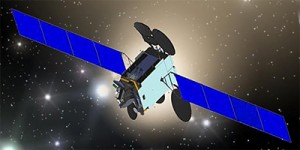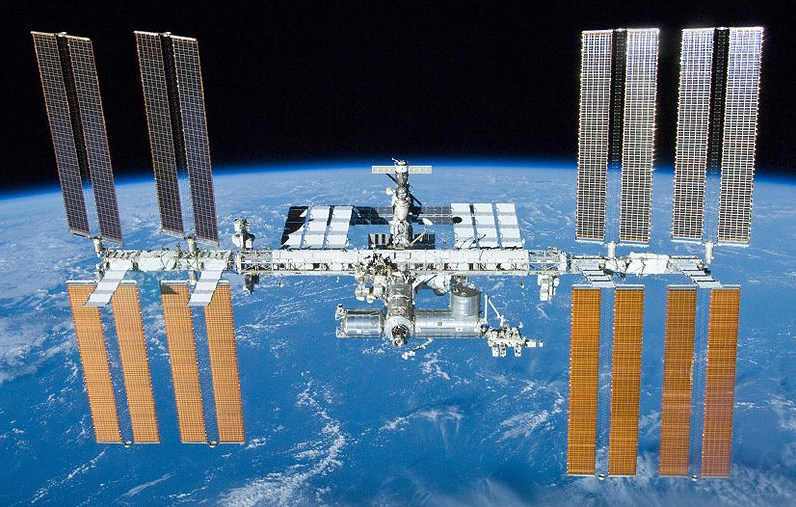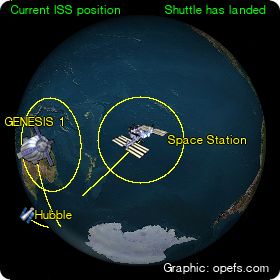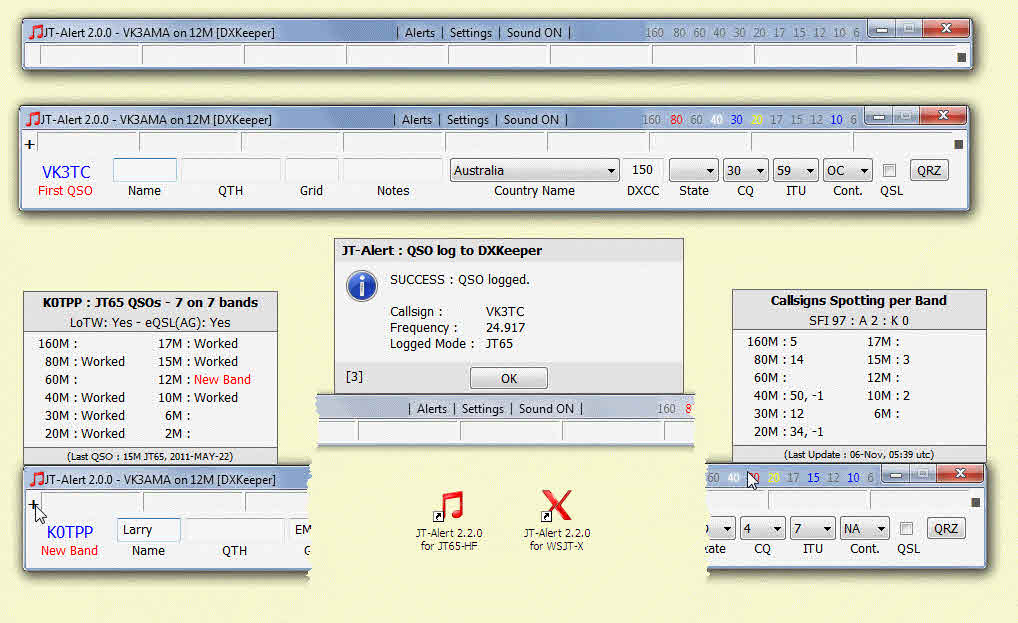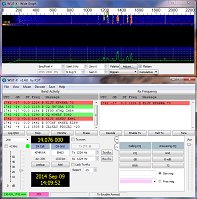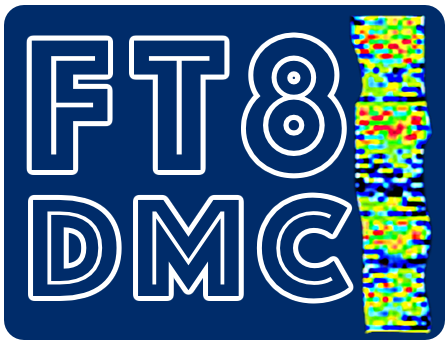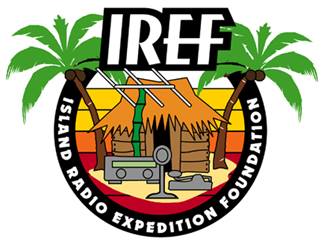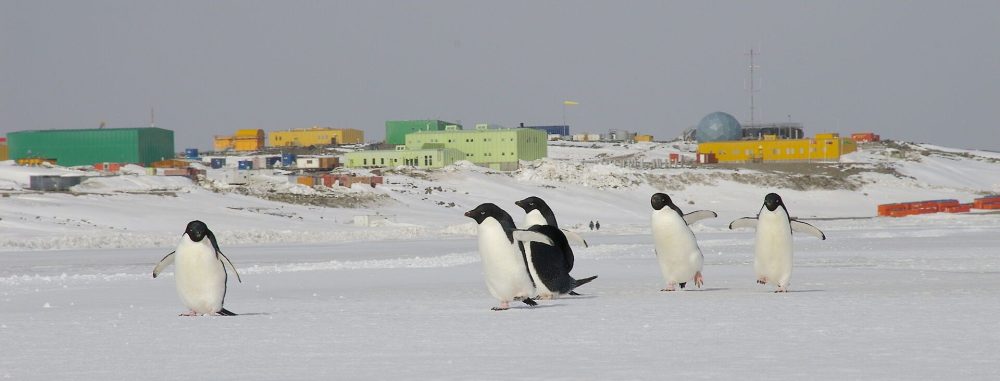 |
Little America IV, new entry on WAP-WADA
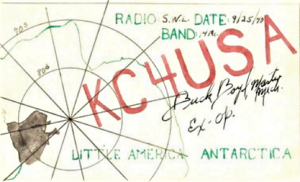 Thanks to Olivier F6EPN (aka Spratley Woody at his Facebook page), another old and rare QSL card, KC4USA dated 1949 proves that Ham Radio was performed at this Base, which was not present on WAP-WADA Directory.
Thanks to Olivier F6EPN (aka Spratley Woody at his Facebook page), another old and rare QSL card, KC4USA dated 1949 proves that Ham Radio was performed at this Base, which was not present on WAP-WADA Directory.
To understand the evolution of the five Little America Stations, we must retrace historical notes from 1928 and ahead:
Little America, was the principal American base in Antarctica, lying on the northeastern edge of Ross Ice Shelf near Kainan Bay. First set up in 1928 as the headquarters for the polar explorations of Richard E. Byrd, it was reused and enlarged by Byrd on his return expedition in 1933–35. In 1940 Byrd established a camp 7 miles (11 km) northeast, later named Little America III (WAP USA-37) , that served as the western base for a government-sponsored exploration of Marie Byrd Land before World War II.
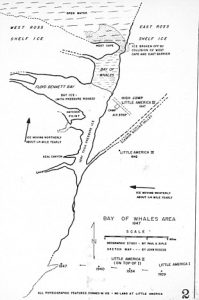 After the war, Little America IV consisting of an airstrip and 60 tents, was set up nearby as a headquarters for Operation High Jump (1946–47), an expedition designed to explore and document Antarctica’s coastline as well as to extend U.S. sovereignty to the continent. When an expedition next returned (1956) in preparation for the International Geophysical Year (1957–58), parts of the earlier Little America camps were found to have vanished because of calving of the ice shelf.
After the war, Little America IV consisting of an airstrip and 60 tents, was set up nearby as a headquarters for Operation High Jump (1946–47), an expedition designed to explore and document Antarctica’s coastline as well as to extend U.S. sovereignty to the continent. When an expedition next returned (1956) in preparation for the International Geophysical Year (1957–58), parts of the earlier Little America camps were found to have vanished because of calving of the ice shelf.
Consequently, Little America V (WAP USA-29) was set up several miles northeast, near Kainan Bay, to serve as a supply base and terminus of a 630-mile- (1,014-kilometre-) long “highway” to Byrd Station in the continent’s interior.
Another piece of information about Little America IV containing the following matter, was found at: Little America IV | Matthew Reilly Wiki | Fandom
«It was built out of a section of Antarctic’s ice shelf and was ostensibly intended to be a resource exploration facility looking for offshore oil deposit. In truth, however the facility served as a convert chemical weapons laboratory, one shoes location easily avoided pubic view and provided s safety buffer should any chemical leak out. Among the weapons the researchers at Little America IV worked on was sarin gas and VX poison gas».
Going back to Little America IV, documents say that it was established in 1946–1947 as the primary camp for Operation Highjump. On 2 and 5 December 1946, 166 Seabees sailed from Port Hueneme on the USS Yancey and USS Merrick assigned to Operation Highjump.
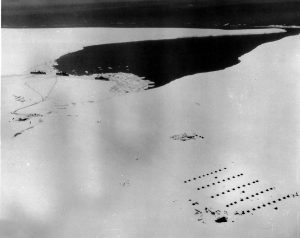 Little America IV camp was thug established as US Navy’s Operation Highjump, of 1946–1947.
Little America IV camp was thug established as US Navy’s Operation Highjump, of 1946–1947.
The old image of the Little America IV camp even if of poor quality gives an idea of what was the station setup. The camp is in the lower right. Three ships are moored at the ice edge at center left. Admiral Richard Byrd had established Little America I, II, III, and IV all within this same general area at the Bay of Whales. Ten years later when the US Navy returned to establish Little America V (WAP USA-29) as part of the International Geophysical Year (IGY), they were unable to reach this site due to ice, so built the final Little America station farther east.
TNX and credit : Photo Library, U.S. Antarctic Program
TNX F6EPN whose merit is to have found a 1949 old KC4USA QSL card
Now, WAP-WADA has already listed: Little America I (WAP USA-43), Little America III (WAP USA-37), Little America V (WAP USA-29). At the light of the acquired evidences, WAP is going to add , Little America IV (WAP USA-5Ø New Entry), as follow:
Little America IV
Reference WAP USA-5Ø
Location: Bay of Whales, West Ross Ice Shelf,
Coordinates: 78° 12’ South, 162° 30’ West

Merci à Olivier F6EPN (alias Spratley Woody sur sa page Facebook), une autre carte old et rare QSL, KC4USA daté
1949 prouve que Ham Radio a été exécuté à cette base, qui n’était pas présente sur WAP-WADA Directory.
Pour comprendre l’évolution des cinq stations Little America, nous devons retracer les notes historiques de 1928 et au-delà :
Little America, était la principale base américaine en Antarctique, située sur le bord nord-est de la plate-forme de glace de Ross près de
Baie de Kainan. Créé en 1928 comme quartier général des explorations polaires de Richard E. Byrd, il a été réutilisé et agrandi par Byrd lors de son expédition de retour en
1933–35. En 1940, Byrd a établi un camp à 11 km au nord-est, nommé plus tard Little America III (WAP USA-37
) , qui a servi de base occidentale pour une exploration parrainée par le gouvernement de Marie Byrd Land avant la Seconde Guerre mondiale.
 Après la guerre, Little America IV, composé d’une piste d’atterrissage et de 60 tentes, a été installé à proximité en tant que quartier général de l’opération High Jump.
Après la guerre, Little America IV, composé d’une piste d’atterrissage et de 60 tentes, a été installé à proximité en tant que quartier général de l’opération High Jump.
(1946-1947), une expédition conçue pour explorer et documenter le littoral de l’Antarctique ainsi que pour étendre la souveraineté des États-Unis au continent. Lors d’une prochaine expédition
(1956) en préparation de l’Année géophysique internationale (1957-1958), des parties des premiers camps de Little America ont disparu à cause du vêlage de
la banquise.
Par conséquent, Little America V (WAP USA-29) a été installé à plusieurs kilomètres au nord-est , près de la baie de Kainan, pour servir de
base d’approvisionnement et terminus d’une ‘autoroute’ longue de 630 miles (1 014 kilomètres) vers la gare de Byrd à l’intérieur du continent.
Une autre information sur Little America IV contenant le sujet suivant, a été trouvée sur :
Petite Amérique IV | Matthieu Reilly Wiki | Fandom
« Il a été construit à partir d’une section de la banquise de l’Antarctique et était censé être une installation d’exploration des ressources à la recherche d’un gisement de pétrole offshore. En vérité,
cependant, l’installation servait de laboratoire d’armes chimiques converti, un emplacement de chaussures évitait facilement la vue du public et fournissait un tampon de sécurité en cas de fuite de produit chimique. Parmi les
les armes sur lesquelles les chercheurs de Little America IV ont travaillé étaient le gaz sarin et le gaz toxique VX».
En remontant à Little America IV, des documents indiquent qu’il a été créé en 1946-1947 en tant que camp principal de l’opération Highjump. Les 2 et 5 décembre
1946, 166 Seabees ont quitté Port Hueneme sur l’USS Yancey et l’USS Merrick affectés à l’opération Highjump.
 Le camp Little America IV a été créé par des voyous dans le cadre de l’opération Highjump de la marine américaine, de 1946 à 1947.
Le camp Little America IV a été créé par des voyous dans le cadre de l’opération Highjump de la marine américaine, de 1946 à 1947.
L’ancienne image du camp de Little America IV, même si elle est de mauvaise qualité, donne une idée de la configuration de la station. Le camp est en bas à droite. Trois navires sont amarrés à la lisière des glaces au centre gauche. L’amiral Richard Byrd avait établi Little America I, II, III et IV dans cette même zone générale de la baie des baleines. Dix ans plus tard, lorsque la marine américaine est revenue pour établir Little America V (WAP USA-29) comme dans le cadre de l’Année géophysique internationale (AGI), ils n’ont pas pu atteindre ce site à cause de la glace, ils ont donc construit la dernière station Little America plus à l’est.
TNX et crédit : photothèque, programme antarctique américain
TNX F6EPN dont le mérite est d’avoir trouvé une ancienne carte QSL KC4USA de 1949
Maintenant, WAP-WADA a déjà listé : Little America I (WAP USA-43< /span>), Little America III (WAP USA-37), < strong>Little America V (WAP USA-29). À la lumière des preuves acquises, WAP va ajouter , Little America IV (WAP USA-5Ø New Entry ), comme suit :
Little America IV
Référence WAP USA-5Ø
Emplacement : Baie des baleines, plate-forme de glace West Ross,
Coordonnées : 78° 12′ Sud, 162° 30′ Ouest
Info de la Source Publié * ICI



